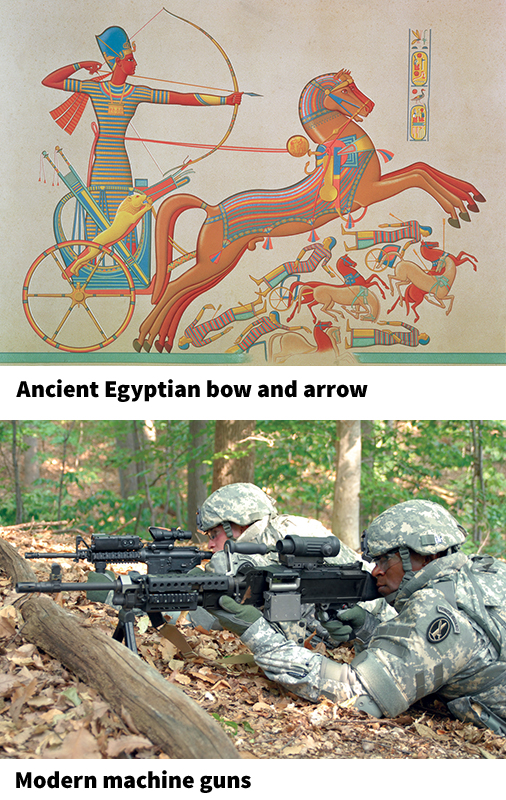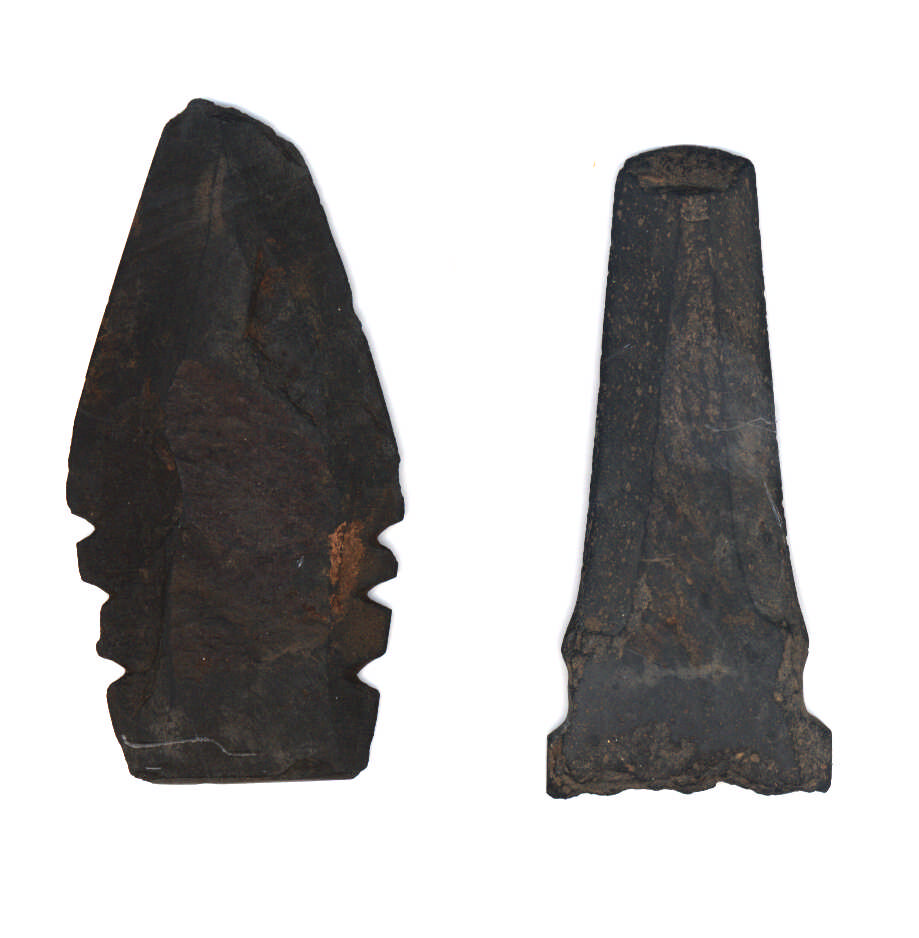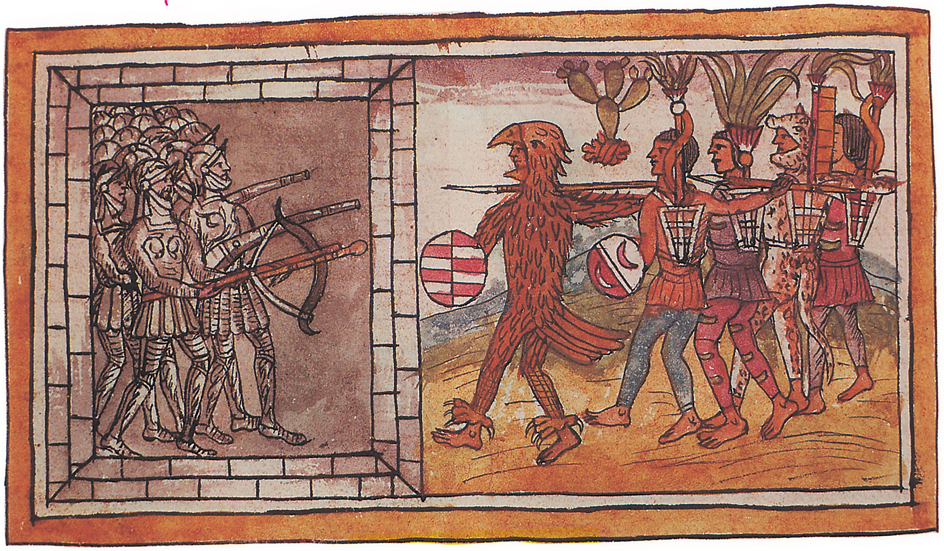Weapon is a tool used to injure or kill living things or otherwise defeat enemies in combat. Weapons vary greatly in size and complexity. Some of the earliest weapons were little more than rocks or sharpened sticks. Many modern weapons are computerized systems carried on land vehicles, ships, or airplanes and guided by satellites in outer space. The development of weapons has shaped how people fight wars and who wins them. Many cultures have spent vast resources to create more powerful weapons.

Weapons work according to a number of physical principles. Projectile weapons, for example, shoot a small object, such as an arrow or a bullet, at extremely high speed. Incendiary weapons cause damage by heat or burning. Some weapons dispense poisonous chemicals or dangerous germs. Nuclear weapons are perhaps the most destructive of all. They can kill millions of people and permanently damage Earth’s environment.
Ancient and medieval weapons
Ancient weapons included axes, clubs, spears, and such projectile weapons as darts and bows and arrows. As people learned to shape and strengthen metals, they created more durable—and deadlier—weapons. The great civilizations of the past fought battles with such complex war machines as siege towers and catapults.
Prehistoric weapons.
Prehuman ancestors probably used unshaped rocks, wooden clubs, and sharpened sticks as weapons. Archaeologists have discovered wooden spears that are about 400,000 years old. Prehistoric hunters chipped stones into shapes with sharp edges and points. They used such weapons to kill animals as large as buffalo.

By 15,000 B.C., people around the world began using devices to help launch projectiles with greater force. One widespread device was the atlatl << AHT laht uhl >> . It is a wooden rod that holds the end of a throwing spear or dart. The motion of throwing the projectile also swings the atlatl, and the force of the swing is added to the throw. Native Americans used atlatls up through the 1500’s, when the first Europeans arrived.
Other early projectile weapons included curved throwing sticks called boomerangs and dart-shooting blowguns made of hollow stalks of cane or bamboo. Hunters used such weapons to kill rabbits, ducks, and other small game. Warriors also used slings of leather or cord to hurl projectiles.
The bow and arrow appeared by 9000 B.C. at the latest, and possibly much earlier. This weapon remained in use for thousands of years. Various civilizations have improved it to gain military advantage over their rivals. By 1200 A.D., Europeans improved the longbow, a bow 6 feet (2 meters) in length that could shoot arrows with enough force to pierce armor. Skilled English archers used the longbow to defeat French armies that greatly outnumbered them during the Hundred Years’ War (1337-1453).
Metal weapons.
Some early metal weapons were made from copper, which is not particularly strong. People eventually learned to mix copper and tin to make a much stronger alloy (mixture of metals) called bronze. Ancient Greek foot soldiers called hoplites lined up behind walls of bronze-plated shields and stabbed out at enemies with bronze-tipped spears. By 1200 B.C., people learned to forge even stronger weapons and armor out of iron. Roman soldiers called legionnaires carried an iron short sword called a gladius.

Over time, cultures around the world created distinct metal weapons. Expert metalsmiths forged ornately decorated swords of legendary strength and sharpness. These swords included the curved scimitar of the Middle East, the katana of Japan, and the dao of China. Swords were expensive. As a result, peasants generally used axes, pikes, maces, and other simpler weapons.
The advantage of metal weapons became clear in the 1500’s when small bands of Spanish warriors conquered huge armies of the Aztec and the Inca. The Spaniards had a few firearms, but their main weapons were steel swords and lances. The lightly armored Aztec and Inca warriors had no defense against such sharp weapons.
Siege weapons
were first heavily used by the Assyrians in the 800’s B.C. for breaking through the fortifications of enemy cities. Wooden siege towers, some over 100 feet (30 meters) tall, enabled attackers to assault high city walls. To smash gates, attackers made battering rams—sometimes out of entire tree trunks topped with iron heads.
Greek and Roman forces developed large projectile-launching machines. They included stone-hurling catapults and spear-shooting ballistas, which were much like giant crossbows. Medieval Europeans developed more powerful siege weapons. One was the trebuchet, which used counterweights to fling heavier stones than those that could be launched by catapult.

Gunpowder weapons
Around A.D. 850, the Chinese developed gunpowder fireworks for ceremonial purposes. Later, they turned fireworks into weapons, creating “fire arrows” and “fire dragon” rockets. These devices were inaccurate. But the explosions terrified enemies and their horses. By the 1300’s, Chinese gunpowder technology had reached Europe, and the nature of warfare there changed forever.
Artillery.
In Europe, cannons and rockets started small. But improvements in metal making and gunpowder led to weapons that could hurl 400-pound (180-kilogram) iron balls at least 1 mile (1.6 kilometers). Such cannons were expensive, hard to move, and unpredictable in aim. However, they could easily shatter high, thin castle walls. As a result, people began building fortifications with lower, thicker walls.
Cannons also revolutionized naval warfare. From the 1500’s onward, new warships were designed to carry dozens of the heavy weapons.
Firearms.
Early firearms (smaller guns carried by soldiers) were inaccurate, complex, and often dangerous to operate. They could only pierce armor at close range. However, their deafening explosions terrified enemies. European soldiers in the 1400’s still used swords, pikes, and other old weapons. But they soon began using more firearms.
By the 1600’s, inventors developed new wheel lock and flintlock guns. These weapons triggered automatically by sparks struck inside the gun. Soldiers no longer had to manually set fire to fuses. During the American Revolution (1775-1783), colonists fought with a deadly new firearm—the rifle. Unlike earlier firearms, rifles have barrels with spiral grooves inside them. The grooves spin the bullet as it fires, increasing the weapon’s range and accuracy.
Firearms continued to become easier and faster to fire. By 1836, an American inventor named Samuel Colt began mass producing the first affordable revolvers, handguns that could reliably fire several rounds without reloading. In the late 1800’s, inventors created machine guns that could fire 400 rounds per minute. European troops used this new weapon to defeat much more numerous African warriors in wars of colonial expansion.
Modern weapons
Guns remain an important, widespread, and deadly modern weapon. But during the global conflicts of the 1900’s, nations developed increasingly destructive devices, including nuclear weapons. Electronics and computers made these weapons more precise.
World War I
(1914-1918) involved the heavy use of machine guns. Soldiers fired them from trenches to cut down enemies charging across the battlefield. Soldiers also used deadly artillery strikes and hand grenades. Above the battlefield, airplane pilots dropped bombs and shot down enemy planes in dramatic battles called dogfights. At sea, German submarines called U-boats shot torpedoes at British ships. In return, British ships hunted U-boats with anti-submarine shells, mines, and underwater bombs called depth charges.
At the time, Germany’s chemical industry led the world. The country manufactured chlorine, mustard gas, and other poisonous chemical weapons for battle. The Allies developed their own chemical weapons. After the war, the use of chemical weapons was limited by the 1925 Geneva Protocol.
World War II
(1939-1945) involved more—and more heavily armed—tanks, ships, and airplanes than did World War I. Firebombing raids by airplanes destroyed entire cities and killed thousands of civilians. German rocket scientists developed V-1 and V-2 missiles and launched thousands of them against the United Kingdom, terrifying civilians. Allied scientists developed electronic firing-control mechanisms for guns. New proximity fuses automatically blew up explosive shells near their targets.
In 1942, the United States government set up the Manhattan Project to build a nuclear weapon. In 1945, American planes dropped atomic bombs on the Japanese cities of Hiroshima and Nagasaki, largely destroying them. The explosions killed tens of thousands of people. More died later from radiation poisoning.
After the war, the United States and the Soviet Union designed even more destructive nuclear weapons. Some were hundreds of times more powerful than the ones dropped on Japan. The countries also developed intercontinental ballistic missiles (ICBM’s) that could carry nuclear weapons anywhere in the world.
Recent developments.
Precision-guided munitions—also called “smart bombs”—have played an important role in conflicts of the 1990’s and early 2000’s. Some bombs have cameras and enable pilots to adjust their path as they drop. Modern weapons research has explored the development of battle robots as well as devices that use sound, shock, or other less lethal means to subdue opponents.
